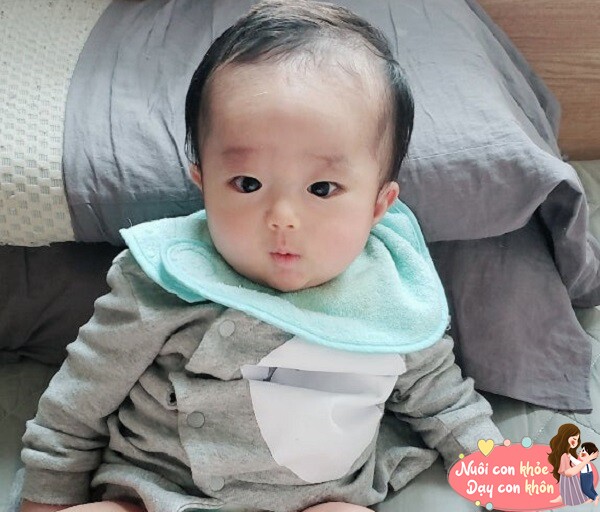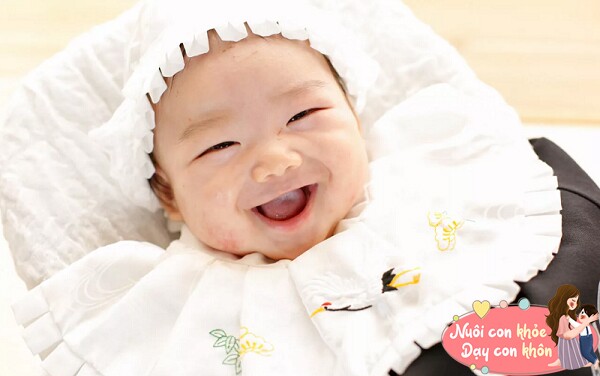Recent studies have indicated that individuals with higher intelligence may exhibit specific physical traits, such as a broader forehead and brighter eyes. These physical attributes have been associated with enhanced brain development in certain regions, including the prefrontal cortex, which is responsible for complex thinking, planning, and decision-making abilities.
According to ancient beliefs, children with higher IQs possess noticeable physical characteristics, such as bright eyes and a prominent forehead.

A Broad Forehead
A person with a broad and ample forehead gives an impression of strength and intelligence. John Medina, a neurologist, mentioned that “20% of an individual’s IQ difference is related to brain size, and the size of the prefrontal cortex is particularly crucial.”
The prefrontal lobe, the brain’s thinking center, is responsible for problem-solving, interpreting emotions, future planning, and engaging in other creative thinking activities.
Thus, to some extent, a broader forehead may indicate higher intelligence.

A high and broad forehead.
Of course, the brain follows the “use it or lose it” principle, and it also has plasticity. This plasticity is most prominent during childhood, so it’s essential to stimulate the prefrontal lobe through activities such as empathy, timely responses, and encouraging children to take on tasks they can handle.
For instance, allow a 2 or 3-year-old to stack picture books, read, and put away toys. For preschoolers, encourage them to dress themselves, fold their clothes, put dirty laundry in the hamper, and set the table.
In summary, as children grow and take on more household chores, their prefrontal lobes can be effectively trained. Reading before bed is also an excellent form of exercise.

Bright Eyes
“Bright-eyed” is often used to describe someone who is perceptive and quick-witted. In reality, the eyes and the brain complement each other. Approximately 80% of the information in the brain is received through the eyes and sent to the occipital lobe (the visual processing center) for interpretation.
For instance, when we see an apple, the images captured by the left and right eyes are slightly different. Only when these images are simultaneously sent to the brain and processed in the visual center can we perceive the three-dimensional image of a red apple.
If a child has strong visual perception, their brain will receive accurate and rapid feedback from their eyes, enhancing their overall cognitive abilities.

Bright and sharp eyes.
Excellent visual perception makes it easier for children to learn and perform various tasks. For example, they can easily draw what they envision, write with precision, and quickly grasp the main ideas when reading, understanding the author’s intent.
In summary, good visual perception can benefit various aspects of a child’s life, from everyday tasks to academic performance.
The occipital lobe develops most rapidly before the age of four. Activities such as paper folding, puzzles, chess, and other educational games can help develop a child’s “bright eyes” and stimulate the growth of the prefrontal cortex during the first six months after birth.

A Smiling Face
It is believed that children who smile frequently are not only lucky but also more intelligent. The amygdala, a part of the brain, regulates emotions such as happiness, anger, and sadness. When we feel happy, this area becomes active, stimulating the nearby anterior cingulate cortex (ACC), which triggers a smile.
Additionally, when we are excited, the ACC is activated, releasing beta-endorphins that have a calming effect and promote happiness.
Smiling can help children develop a positive attitude and improve their mental well-being.
Our brains contain mirror neurons that fire when we behave similarly to others.

A smiling face.
When a child smiles at others, it indicates that their caregiver also smiles frequently. It reflects a supportive and secure environment, which is essential for the child’s well-being.
The brain’s primary concern is survival, and once that is ensured, it can focus on other things. When a child feels safe and emotionally secure, they can calmly explore the world, discover new interests, develop new skills, and enhance their intelligence.
While physical characteristics may provide insights into a child’s intelligence, they are not the sole determining factors. Intellectual development is also influenced by various factors, including educational environment, nurturing, and life experiences.















